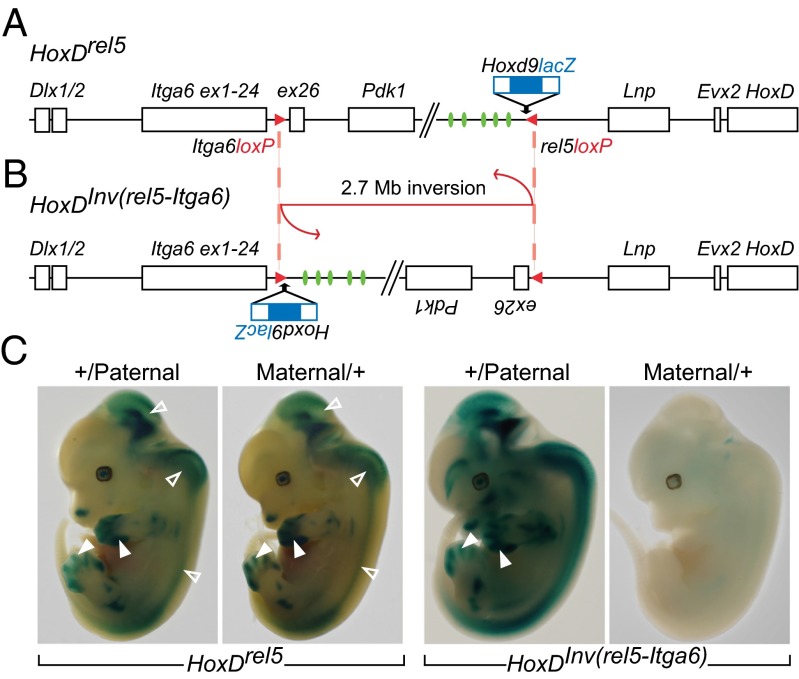Fig. 1.
Allele-specific expression of a lacZ transgene positioned inside the Itga6 locus. (A) Scheme of the HoxDrel5 allele. An Hoxd9lacZ transgene (blue) was inserted into the rel5 site along with a loxP site (red). On the same chromosome, another loxP site with an opposite orientation is present within the Itga6 gene (red) substituting for a deletion of exon 25 (31). (B) Scheme of the same locus after the HoxDInv(rel5-Itga6) inversion was induced. As a result, the Hoxd9lacZ transgene is repositioned within Itga6 2.7 Mb away from its original insertion site. Digit enhancer sequences (green) active on HoxD cluster genes are inverted along with the reporter transgene. (C) Whole-mount staining of β-gal activities of embryos heterozygous for the transgene (Left) before and (Right) after the inversion. Embryos carrying either a paternally or a maternally inherited transgene are marked +/Paternal or Maternal/+, respectively. In Left, β-gal reporter activities show strong and comparable patterns independent of parental inheritance. Staining is observed in the brain and the spinal cord (open arrowheads) as well as in the developing digits in response to the nearby-located enhancers. Right shows the imprinting of the Hoxd9lacZ transgene after inversion when inherited from the mother with an almost complete absence of staining. In HoxDInv(rel5-Itga6) +/Paternal fetuses, staining persists in both the CNS and the digits (arrowheads), with some expression sites likely imposed by the unique transgene environment.

